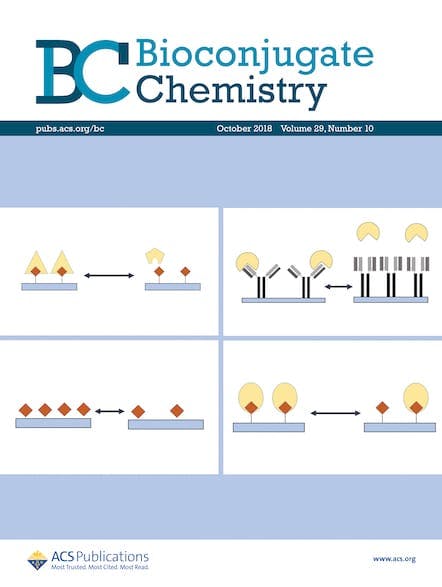Over the past five years, Bioconjugate Chemistry (BC) has undergone a dramatic transformation. The scientific scope of the journal has expanded, embracing new research topics including nanotechnology, immunology, polymers, materials, and regenerative medicine. In addition, the geographical footprint of BC has broadened, with the appointment of Zhifei Dai (Peking University) to the Editorial team, expanding […]

I caught up with Editor-in-Chief, Vincent M. Rotello, to hear his thoughts about how the field has developed over the past 30 years and his visions for the future of Bioconjugate Chemistry.
What do you think has been the most significant development in the field over the past 30 years?
I’d say the field itself. We have developed (and are continuing to generate) new tools for generating bioconjugates, and applying these unique systems in so many different domains.
How has the scope and direction of Bioconjugate Chemistry changed in the time that you’ve been Editor-in-Chief?
We have worked hard to broaden the scope of BC to encompass the diversity of “chemistry+biology=cool”. We continue to be leaders in the area of imaging and delivery of biologics, and have added communities ranging from nucleic acid nanotechnology to regenerative medicine to our portfolio.
Where do you see research going in the field in the next decade?
My forecast is that we will see new and unexpected synergies between chemistry and biology that will enable technologies unthought of today.
What is your vision for Bioconjugate Chemistry going forwards?
In addition to embracing new and exciting science, BC is working hard to innovate on the publishing front. The Editors at BC work with authors, helping them throughout the review process to increase the impact of their work. And we do it speedily, with the average time from submission to online publication <40 days!
Are there any ‘hot topics’ which you feel are particularly prevalent right now?
I see imaging and delivery of biologics hitting their stride, and ‘smart’ bioconjugates that respond and react starting to come on-line. When these areas are combined, things will get really interesting.
